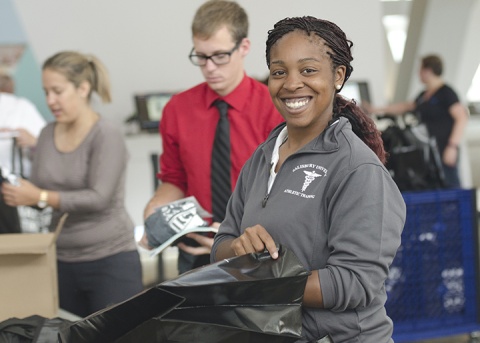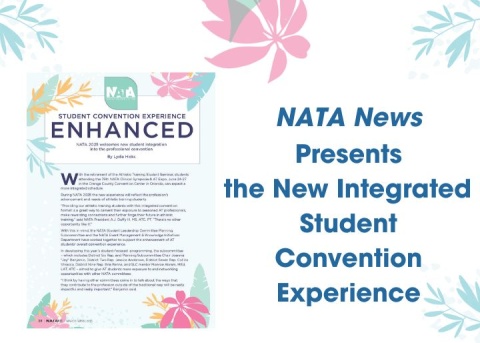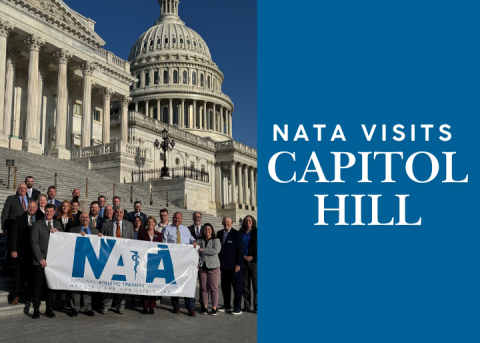
In honor of National Hispanic Heritage Month, Sept. 15-Oct. 15, NATA Now is highlighting some of our leaders at the state, district and national levels as they shed light on their volunteer journeys.
For Alex Salinas, MS, AT, ATC, his foray into health care developed with medicine running in his family.
Inspired by his sister’s pediatrics career, Salinas grew an interest in sports medicine during his pre-physical therapy and athletic training program experiences.
“I was always interested in health, anatomy and physiology, but didn’t know where or how to apply the interest,” Salinas said. “I started as a pre-physical therapy student. By the end of my first semester in the athletic training program, I knew I had found what I was looking for. Special thank you to Joe Dykstra [MA, LAT, ATC,] and Jenny Toonstra [PhD, LAT, ATC,] for having an awesome first clinical site.”
Beyond the athletic training facility, Salinas’ has made further impact on the athletic training profession. His career development has evolved into volunteer leadership roles ranging from the Michigan Athletic Trainers’ Society Southwest Lower Peninsula Regional representative to his current position as MATS’ president-elect.
Read further for more insight into his volunteer journey and leadership influence.
What was your first volunteer position within the athletic training profession and why did you get involved?
I started as MATS’ Southwest Lower Peninsula Regional representative. I got involved because I wanted a new challenge and, as cliché as it sounds, I wanted to make a difference. In the election cycle before this, I ran for a position, but lost. If you find yourself in this position, don’t get discouraged. Keep knocking, keep showing up.
Tell us about your current position as Michigan Athletic Trainers' Society president-elect and what you hope to accomplish in this role.
As president-elect, I oversee a handful of committees and am in almost every conversation that our president has. Additionally, I coordinate the nomination and election processes for our open executive board positions each November. As I move into the president role in the coming months, I plan on working with our committees on how to best provide educational opportunities for our members. Finally, I hope to grow interest and involvement in both the workforce and education sides of the profession.
Why is representation in leadership important and how does it impact the profession?
Representation in leadership is important because it allows people from diverse backgrounds (social, ethnic, workplace, etc.) to represent a similarly diverse population. We need that mix of people with different life experiences and a range of years in the athletic training profession. If those in leadership had similar backgrounds, there would be less opportunity for disagreement. Healthy conflict allows others to hear differing opinions and perspectives; it keeps us nimble and ultimately helps us grow.
How has volunteering helped you grow personally and professionally?
I get to work with and meet a variety of athletic trainers from different work settings. Change can be a long, slow march, but it’s inevitable. Being a volunteer has helped me see that firsthand.
What’s your fondest memory of serving so far?
The people I have met and worked with who I would not have otherwise had the opportunity to collaborate with. The keywords in that question are “so far.” Ask again in two years.
What advice do you have for other athletic trainers who want to give back to the profession?
We are a volunteer organization and rely on our volunteers to help advocate for our profession at the state level. If you have ideas for improvement, either within the organization or how we can better serve our constituents, get involved! Committees accept new members on a rolling basis, and about half of the executive board positions are up for election each year.





